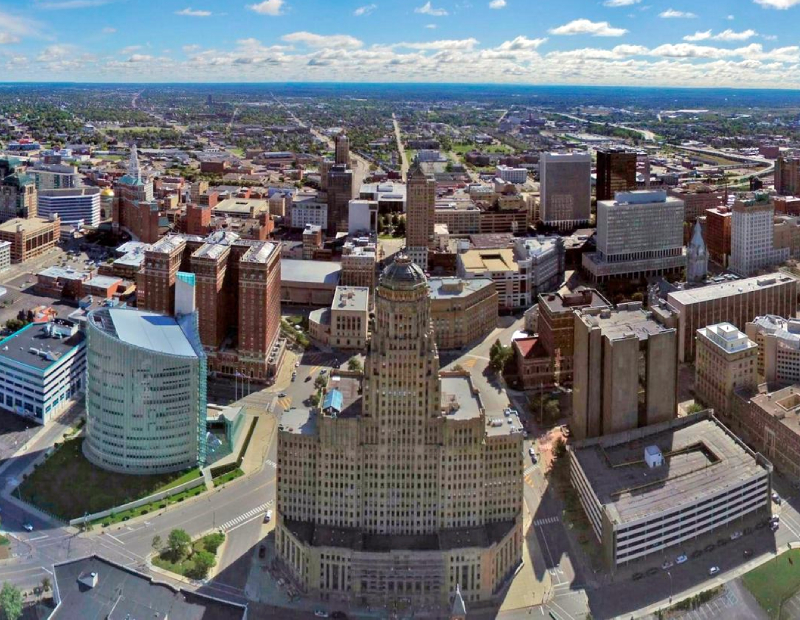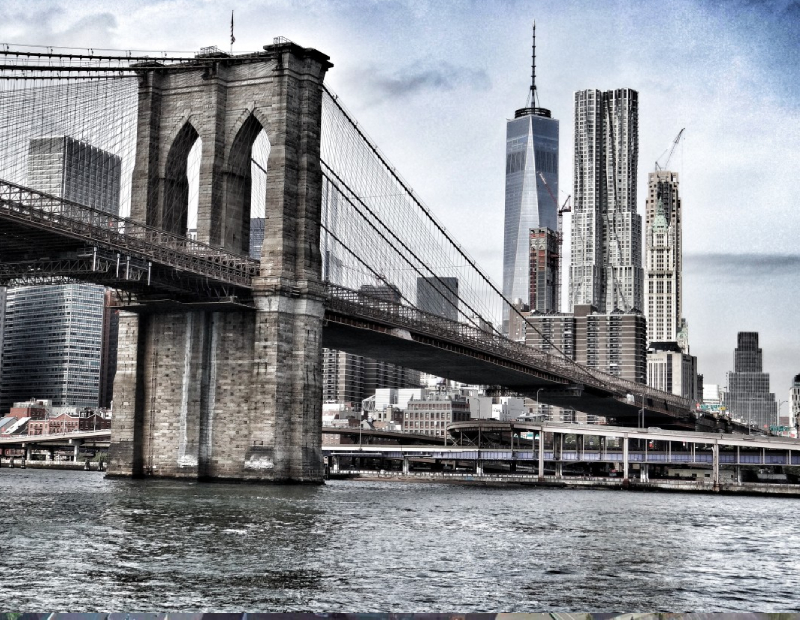Top 5 Markets for Office Construction Activity
Some 145 million square feet was under development as of January. CPE identified the country's top-performing metros in terms of supply as a percentage of existing office stock.
A little more than 9 million square feet came online in January, with nearly two-thirds of it—5.7 million square feet—delivered in the CBD or urban submarkets. Meanwhile, there was a combined total of 145.9 million square feet underway as of January, 2.3 percent of the country’s existing inventory, according to Yardi Matrix data. Development activity in the top tech hubs—Manhattan, Boston and San Francisco—accounted for a quarter of the country’s supply.
However, when looking at the total volume underway as a percentage of its existing inventory, smaller office metros emerge. The space under construction in the markets on this list totals 17.4 million square feet, 11.9 percent of overall supply.
5. Allentown-Bethlehem, Pa.
As construction costs disproportionately affect primary office markets, developers are eyeing smaller, neighboring metros for their projects. Benefitting from its proximity to New York City and a robust employment market, the metro’s office sector continues to expand. Employers added a total of 4,500 positions in 2019, equal to a 1.2 percent uptick, with the leisure and hospitality—up 3.7 percent—and professional business services—up 2.5 percent—sectors leading job growth. However, the metro’s unemployment rate, at 4.4 percent in November, started to increase toward the end of the year, after reaching a cycle low 3.9 percent in mid-2019.
There were 762,500 square feet underway at the end of January, 5.6 percent of the metro’s existing inventory. Two of the three projects are situated in West Allentown and represent 28.9 percent of the submarket’s office stock. Air Products is working on its new headquarters, expected to come online by year’s end. At build-out, the two-building, 624,100-square-foot campus will be one of West Allentown’s largest office properties and the biggest one to come online over the past three decades. Some two miles away, First Commonwealth Federal Credit Union is also developing a new headquarters. The 96,400-square-foot development is slated for completion in the second quarter.
4. Buffalo, N.Y.
As Buffalo, N.Y., is diversifying its economy, job growth has been slowed down by the declining manufacturing industry, which lost 2,000 positions in 2019, a 3.8 decrease. Overall, employment saw a 0.4 percent uptick last year, the lowest growth rate in recent years. However, the education and health services sector added 2,600 jobs in 2019, amounting to 105,000 positions or 18.3 percent of the employment pool. But benefitting from a lower cost of living compared to larger neighboring metros and a highly qualified workforce, population growth has been robust in recent years, resulting in a surge for both the multifamily and office markets.
Following three years of rather modest completions, when a combined total of 700,000 square feet came online, developers were working on 1.4 million square feet in January, 6.2 percent of total stock. In the CBD, Douglas Development was working on the transit-oriented, 1.3 million-square-feet Seneca One Tower, expected to include some 920,000 square feet of office and 300 residential units. At build-out, the 38-story building will be metro’s largest office property to date. Roughly 1 mile away, Uniland Development was constructing a 34,200-square-foot building, expected to come online in the second quarter.
3. Nashville
Following Amazon’s decision to open its new operations hub in Nashville and hire as many as 5,000 people over the next seven years, the city’s office market continues its upward trend. Employers added 17,900 jobs in 2019, a 1.7 percent growth rate; more than a third of that consisted of office-using jobs. Leisure and hospitality jobs rose 5.9 percent last year, followed by financial activities jobs—which only accounted for 6.8 percent of the metro’s employment pool—with a 3.9 percent increase in 2019. The metro’s unemployment rate stood at 2.4 percent in November, 100 basis points below the national average.
Office deliveries reached a cycle peak in 2017, when 2.5 million square feet came online. Last year, developers completed 1.4 million square feet. Some 3.9 million square feet were under construction in January, accounting for 7.3 percent of the market’s existing inventory. Of that, the three largest projects—totaling 2.2 million square feet—are projected to be delivered by next year’s end, including Southwest Value Partners’ 1 million-square-foot development at Nashville Yards. The overall project, which will change the face of downtown, is expected to include up to 3.5 million square feet of office space, more than 1,000 residential units, 400,000 square feet of retail and entertainment, as well as a 25-story, 591-key Grand Hyatt hotel.
2. Brooklyn
Brooklyn’s office market continues to boom, thanks to an array of companies attracted by the metro’s highly educated workforce and considerably lower business costs compared to neighboring Manhattan. Despite losses in six of the 10 major employment sectors, New York City added 81,700 jobs in 2019, a 1.1 percent uptick. As financial activities jobs migrate to other places, especially Dallas, the sector lost more than 10,000 positions last year. However, losses have been offset by strong gains in the professional and business services (19,300) and education and health services (53,300) sectors.
At the end of January, developers were working on 3.6 million square feet of office space throughout the metro, representing 9.8 percent of its existing stock. Some 40 percent of the space underway was situated in Opportunity Zones. JEMB Realty’s 500,000-square-foot One Willoughby Square was the metro’s largest office development. Located within an Opportunity Zone, the 34-floor building is expected to come online by year’s end. A few blocks away, Jenel Management is developing a mixed-use project dubbed The Paxton. At build-out, the 43-floor building is expected to include almost 72,000 square feet of office, 22,000 square feet of retail and 327 apartments.
1. Austin
After landing on the fifth place in our previous ranking, Austin is now at the top of the list, thanks to strong leasing interest from tech giants as well as the metro’s solid overall employment gains. Employers added a combined total of 37,800 jobs in 2019, equal to a 3.5 percent uptick; office-using jobs accounted for a little more than a third of the positions gained last year, with the bulk in the professional and business services sector. As multiple high-profile tech companies—including Oracle, Amazon, Apple, Google and Facebook—announced plans to settle in or expand their local operations in the near future, employment growth in Austin is expected to remain robust over the coming quarters.
The increase in demand in recent years triggered a surge in development activity, with 7.2 million square feet completed over the past three years, equal to 10.3 percent of existing inventory. And with 7.8 million square feet underway as of January, representing 11.1 percent of total stock, construction activity shows no sign of slowing down. Lincoln Property Co. is working on the 66-story 6x Guadalupe in downtown, expected to include some 590,000 square feet of office, 349 residential units and 10,000 square feet of retail. The development, designed to meet LEED Gold standards, is slated for completion in 2022.
Yardi Matrix covers office properties of 50,000+ square feet in markets across the United States. This ranking reflects developments underway within that sample group.









You must be logged in to post a comment.